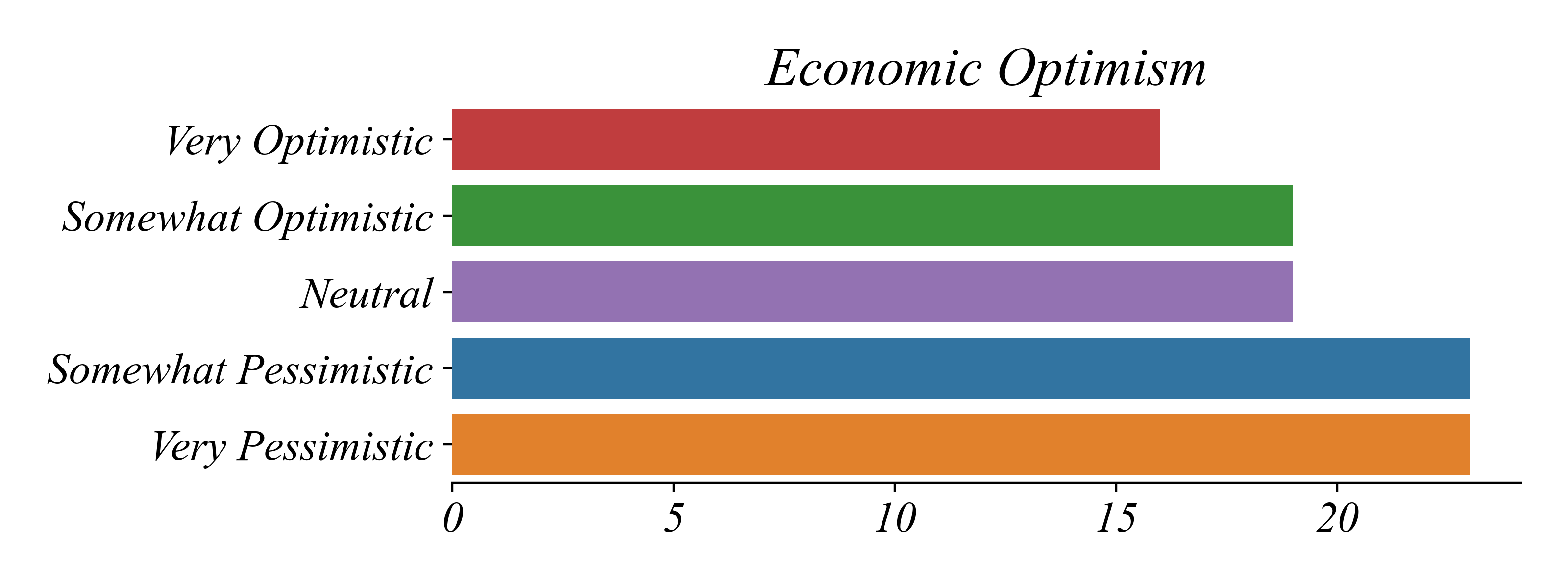ECON 0150 | Economic Data Analysis
The economist’s data analysis pipeline.
Part 1.1 | Summarizing Categorical Variables
Summarizing Categorical Variables
… use the appropriate summary tool for the variable type
Catagorical Variables: Visualizations
Q. Which state has the most locations?

> pay attention to which of these two figures is easier to answer the question
> it’s pretty easy to see that it’s CA from both of these figures
Catagorical Variables: Visualizations
Q. Does FL or WA have more shops?

> pay attention to which of these two figures is easier to answer the question
> a bar graph is much easier to read
Catagorical Variables: Visualizations
Q. How many shops are in FL?

> pay attention to which of these two figures is easier to answer the question
> now it takes a second to read the bar graph…
Catagorical Variables: Bar Plots
Q. How many shops are in FL?

> pay attention to which of these two figures is easier to answer the question
> we can make the bar graph easier to read by placing the number near the bar
Catagorical Variables: Remove Clutter
Q. How many shops are in the state with the second most locations?

> removing clutter guides your eye to the important information
Catagorical Variables: Remove Clutter
Q. How many shops are in the state with the second most locations?

> removing clutter guides your eye to the important information
Catagorical Variables: Order by Size
Q. How many shops are in the state with the second most locations?
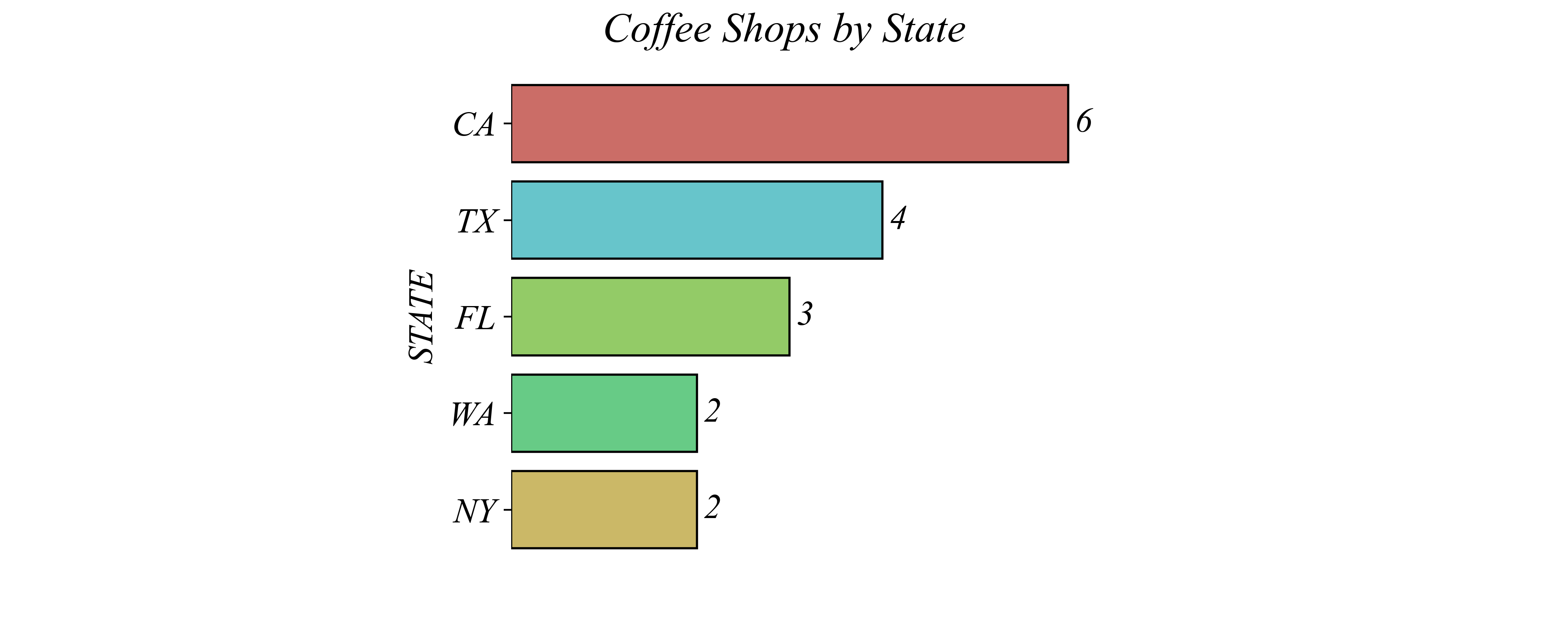
> states have no inherent order, but sorting can make comparisons easier
Binary Categorical Variables: CA vs Other
Q. How does CA compare to the whole?

> instead of a nominal categorical variable, this is binary (CA / Other)
Binary Categorical Variables: Binary Visualization
Q. How does CA compare to the whole?

> this question is much easier to see when visualizing the two categories
> here both the pie and the bar communicte the data effectively
Binary Categorical Variables: Percentages
Q. How does CA compare to the whole?
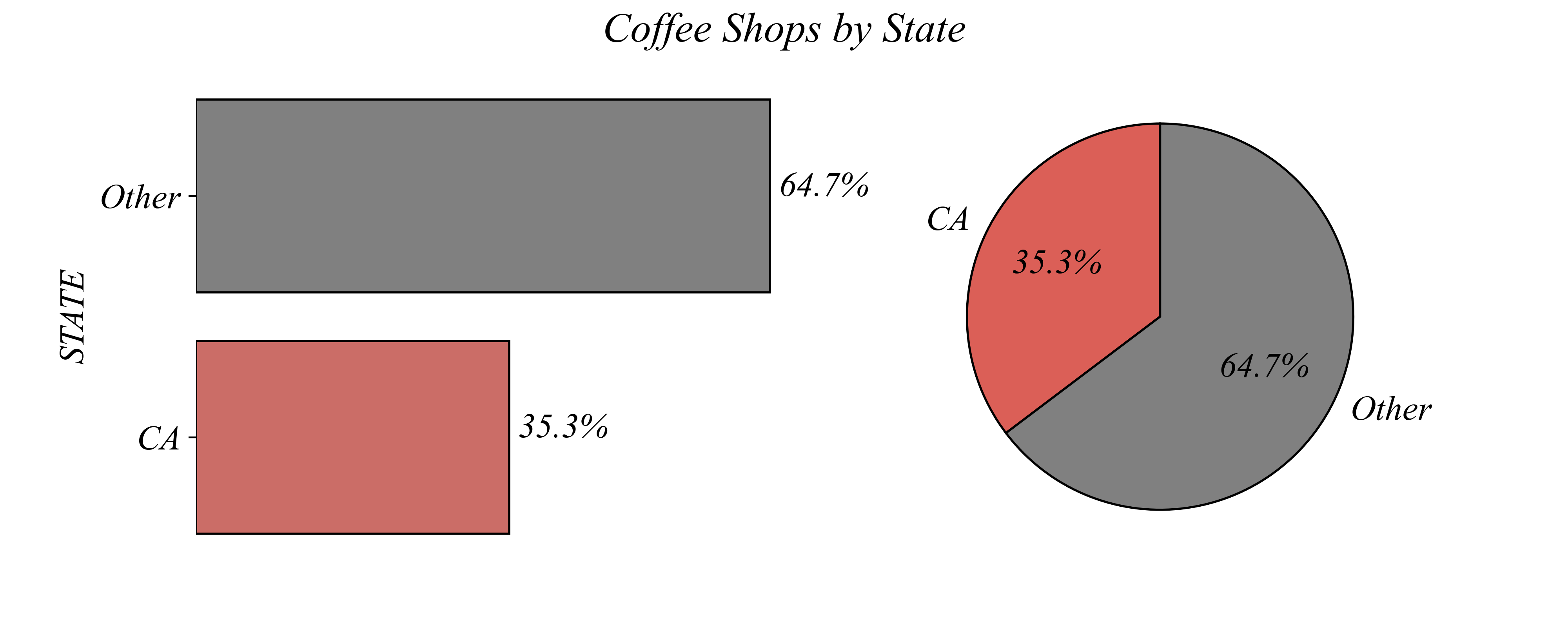
> if the question is about percentages, a pie chart may work best
Takeaways
… use the right summary tool for the variable type
- Binary Categorical Variables: use a pie chart or bar graph
- Nominal Categorical Variables: use a bar graph; maybe order by value
- Ordinal Categorical Variables: use an ordered bar graph
- Remove clutter; keep it simple
- Place information near the object it describes
Exercises 1.1 | Categorical Variables
Lets visualize coffee shops by state.
- Dataset 1:
Coffee_Shops.csv
Lets visualize the main variable in each dataset.
- Dataset 2:
employment_status.csv - Dataset 3:
household_savings.csv - Dataset 4:
household_incomes.csv
Exercise: Dataset 1
Summarize Coffee_Shops.csv as a nominal categorical variable.

Exercise: Dataset 1
Summarize Coffee_Shops.csv as a binary categorical variable.
Exercise: Dataset 1
Summarize Coffee_Shops.csv as a binary categorical variable.
# Create a binary categorical variable
shops['CA'] = np.where(shops['STATE'] == 'CA', 'CA', 'Other')
Exercise: Dataset 2
Summarize employment_status.csv.
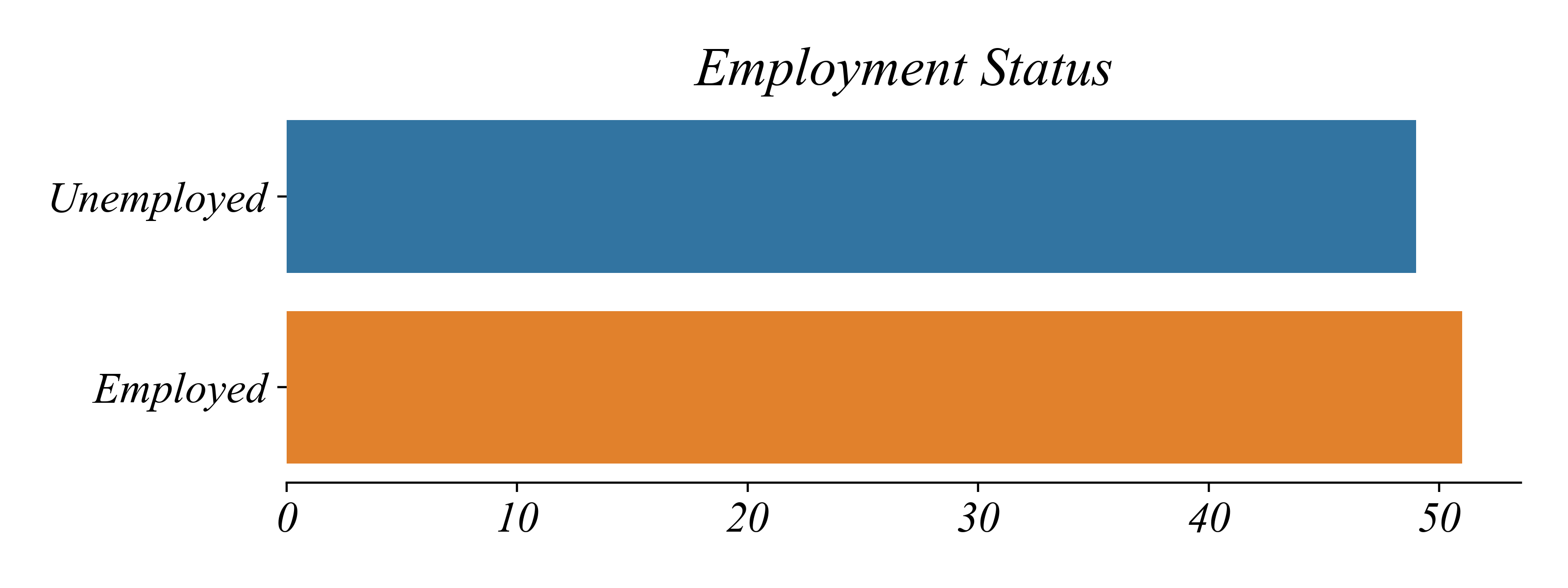
Exercise: Dataset 3
Summarize household_savings.csv.
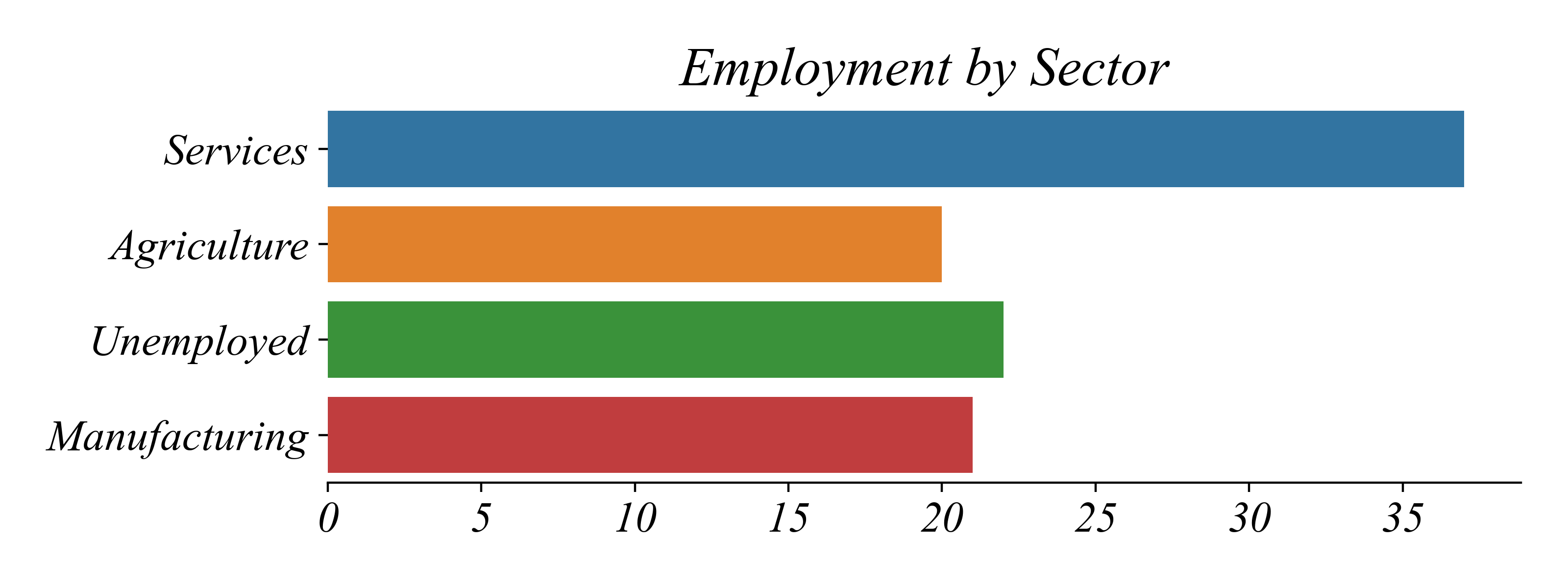
Exercise: Dataset 4
Summarize household_incomes.csv.
